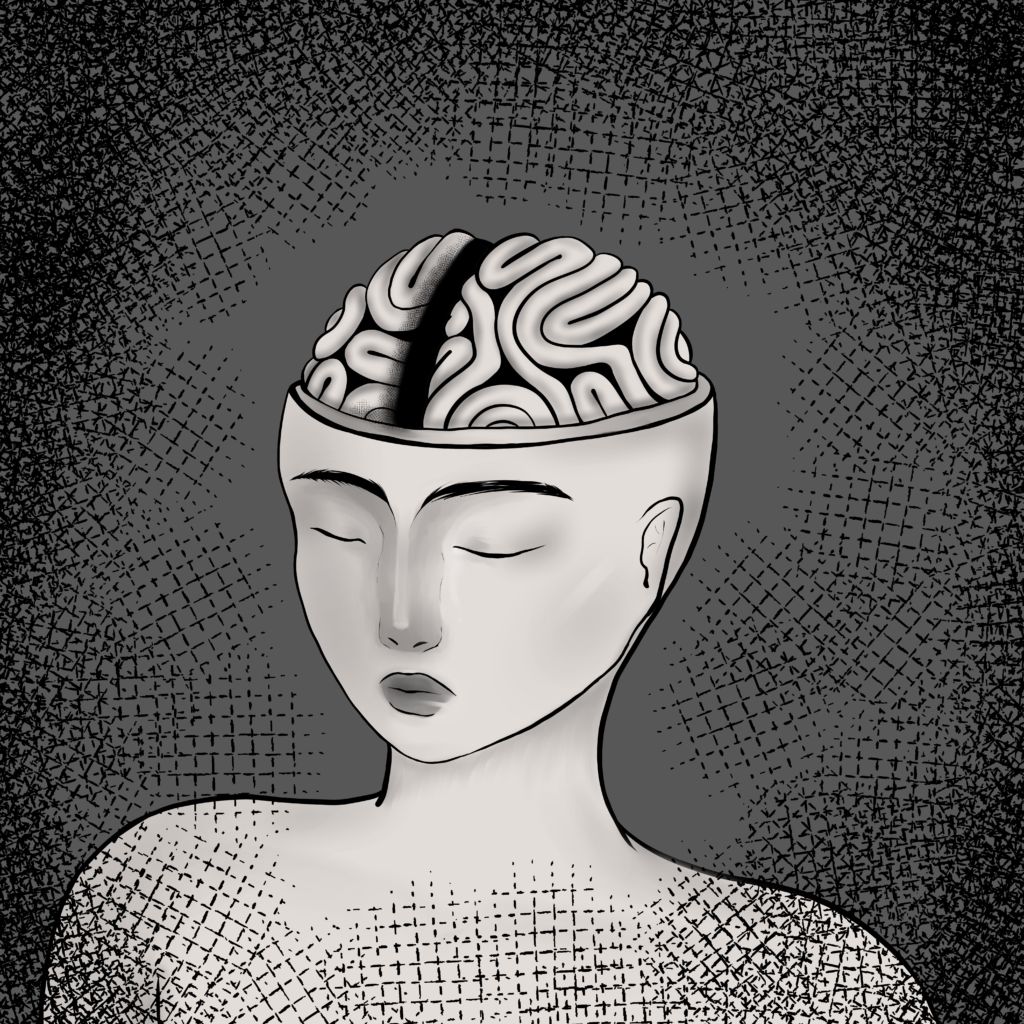By Elisabeth Charlotte GÜNTHER (MAM-S6ENA)
Edited by Dalia Sophia WOLNY (MAM-S5DEA)

Imagine waking up one day to find the world around you completely changed, but the deciding factor isn’t something life-changing—it’s you. Your brain functions have shifted, and everything feels different. John Miller experienced this first-hand after undergoing split-brain surgery, a radical procedure designed to stop his severe epilepsy, which could no longer be treated by medicine. The surgery, which involves cutting the corpus callosum, the bridge that connects the left and right hemispheres of the brain, was meant to limit the spread of his seizures. It was successful; however, it resulted in a series of unexpected consequences. With the two sides of John’s brain no longer connected, they began to operate almost independently. Tasks that once felt instinctive, like putting on clothes, turned into complicated challenges, with the hemispheres seemingly opposing each other.
William P. van Wagenen performed the first corpus callosotomy, also named split-brain surgery, in the medical world in the year 1940. A process which included severing the corpus callosum, the brain region linking the two hemispheres via nerve fibers. The aim was to assist those patients who have persistent and uncontrolled epilepsy that cannot be treated by medicine, by preventing the transmission of seizures from one lobe to the other, thus resulting in improvement of their quality of life. Although this has helped many patients to gain control over seizures, it raised new questions about the functioning of the brain.
Roger Sperry and Michael Gazzaniga, two neuroscientists known for their research on split-brain patients, made groundbreaking discoveries about how the brain works. Sperry found that when the corpus callosum is severed, the two hemispheres of the brain function almost independently, with the left hemisphere controlling language and logic, and the right hemisphere handling emotions, creativity, and spatial tasks. Gazzaniga built on this, showing how split-brain patients could experience two separate streams of consciousness.
In their experiments, Gazzaniga and Sperry sought to understand how split-brain patients would react when an image was restricted to either hemisphere of the brain. This means that either the right or left visual field was shown, whereby only one hemisphere would be activated. For instance, when the image is shown through the right visual field, the left hemisphere, responsible for language, is largely dominant. The patients would be able to verbally explain all that they saw with ease. However, when the same image was shown towards the left visual field (the right hemisphere), often they would fail to give a verbal explanation of the word. Nonetheless, when they were requested to use their left hand to sketch it (which is actuated by the right hand), there was no trouble in recognizing it. For example, after patients were shown the word ‘cup’ on the right hemisphere they would be unable to describe it. On the contrary, drawing it using the left hand wasn’t a hard task, thus patients could not factually state what they saw but draw an image of it and then recognize what the word they saw was. Through these experiments it became obvious that the left hemisphere is dominant for speech whereas the right hemisphere is dominant for sight.
In some split-brain experiments, patients were asked questions like, “Do you believe in God?” Interestingly, the two hemispheres of the same brain didn’t always give the same response. For example, the left hemisphere, which controls speech and reasoning, may answer “Yes,” while the right hemisphere, involved in feelings, might write “No.” This led to an interesting question: if each hemisphere has its own thoughts and beliefs, are we truly one person, or two minds working together?
One real-life example was Vicki, a patient who underwent corpus callosotomy in 1979. While the surgery stopped her seizures, it created unexpected challenges. Everyday tasks, like grocery shopping, became difficult. In the supermarket, Vicki would look at an item and instinctively reach for it with one hand, only for her other hand to intervene. “I’d reach with my right for the thing I wanted, but the left would come in and they’d kind of fight,” she remembers. A simple task, like grabbing a can of soup, became a long ordeal. This lack of communication between the hemispheres led to confusion, and even getting dressed was frustrating—sometimes she found herself wearing multiple outfits at once, unable to reconcile what her brain wanted with what her hands were doing.
In conclusion, the research on split-brain patients, especially the work done by Sperry and Gazzaniga, has greatly improved our understanding of how the human brain operates. Their experiments showed that one hemisphere handles language functions, while the other is in charge of spatial awareness tasks. These discoveries have not only changed our perspective on brain function but have also led to deeper questions about consciousness, identity, and our relationship with the world.
